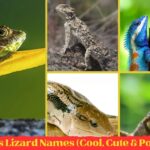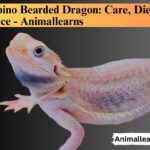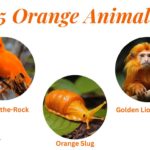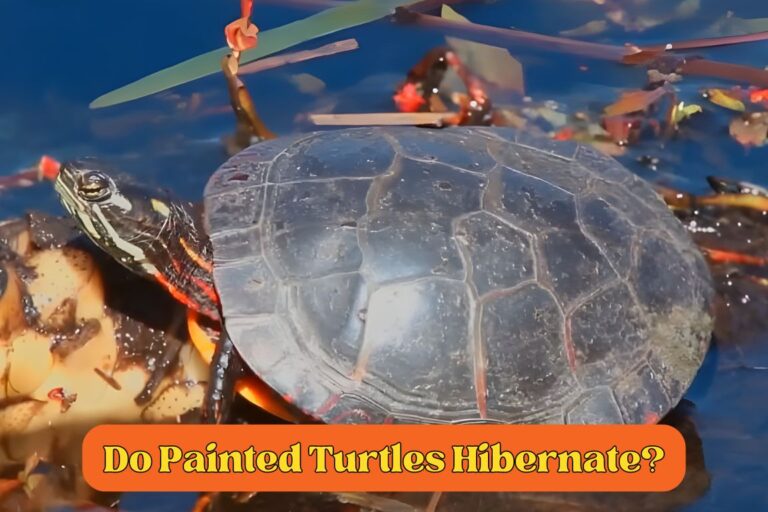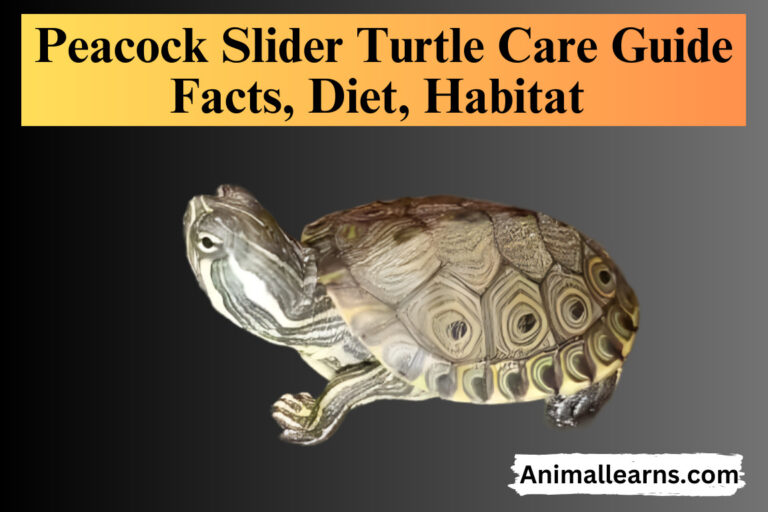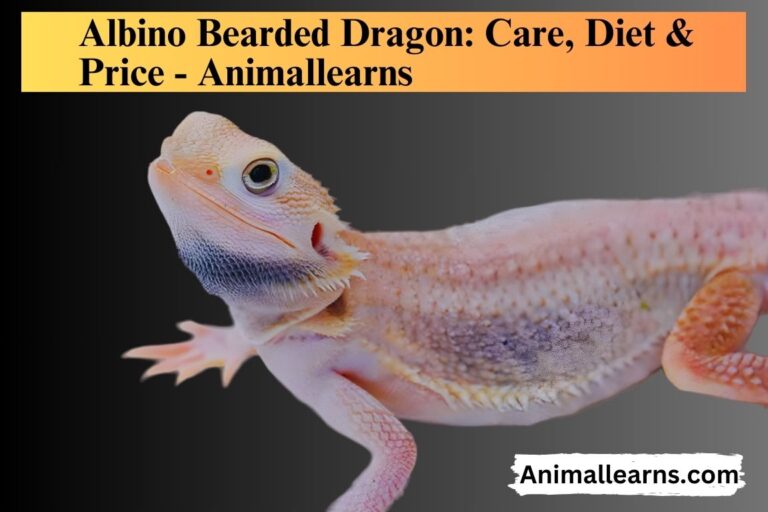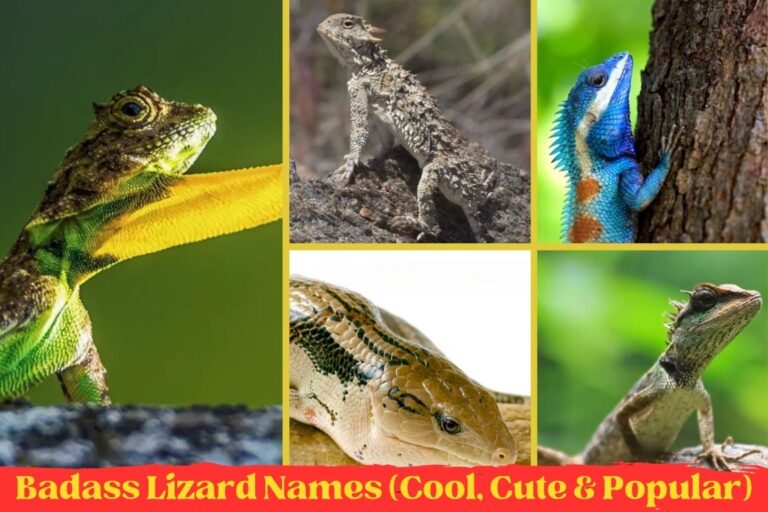Baby Bearded Dragon: Facts, Habitat – Animallearns

Baby bearded dragons, also known as hatchlings, need careful attention and a specialized diet for healthy growth. These lizards, which have spiky grayish, brownish, or orange scales, get their name because of their elongated neck pouch, which resembles a beard, especially as it gets darker.
These animals are equally endearing to their little counterparts, baby bearded dragons, who are interesting and entertaining pets despite their small size. Not many people realize that these cute reptiles have three eyes, which adds to the mystery surrounding them.
They are native to Australia, more especially the Pogona vitticeps species, and they have become well-established in American herpetology.
They are in high demand as pets because of their serene nature, dragon-like appearance, variety of exotic color variations, and prolific reproductive system that even outpaces that of rabbits.
Appearance
Contents
- 1 Appearance
- 2 Habitat
- 3 Albino Bearded Dragon Hatchlings Have Three Eyes
- 4 Amazing Baby Bearded Dragon Facts
- 5 Did You Know Baby Bearded Dragons are Called Hatchlings?
- 6 Incubation Temperature May Impact Hatchlings’ Intelligence
- 7 Baby Bearded Dragons Really Have a Beard!
- 8 Hatchlings Can Change Colors!
- 9 Feeding
- 10 How Long To Bearded Dragons Live?
- 11 How Big Do Bearded Dragons Get?
- 12 Terrarium Size For A Baby Bearded Dragon:
- 13 Are Bearded Dragons Good Pets
- 14 Baby Bearded Dragon’s price
- 15 How Long Can A Bearded Dragon Go Without Eating
- 16 Conclusion
- 17 FAQs (Frequently Asked Questions)

Little, spiky reptiles with captivating eyes and a wide spectrum of colors are baby bearded dragons. Their basic color can range from light brown to dark green, and they frequently have red, orange, or yellow patterns to go along with them.
They can collect insects with their long, sticky tongues and long, thin tails. The look of this reptile gradually changes as they develop, yet their endearing appeal and distinctive qualities never go away.
Bearded dragons, with their endearing charm and unique appearance, contrast the striking and exotic nature of red-eyed crocodiles in the world of captivating reptiles.
Habitat
Hatchlings do well in warm, dry climates. Australia’s stony deserts, scrublands, and open forests are among their natural habitats. These surroundings should be replicated in their cage in captivity, including a cold region with temperatures about 75 degrees Fahrenheit, a warm basking zone with temps between 95 and 105 degrees, and humidity levels between 30 and 40%.
Albino Bearded Dragon Hatchlings Have Three Eyes

Most likely, you’ve heard a tale or two about cyclops creatures with a third eye situated in the center of their foreheads. Although they are less menacing, infant dragons are similar to these made-up creatures in that they possess the third eye attribute.
The first two eyes of a hatchling are visible on either side of its head. Like humans, they utilize their vision through their eyes to view things. However, the unaided eye is unable to notice their third eye. On top of its head is this eye, sometimes known as the parietal eye. Bears use this eye to sense variations in shade and light.
Why does a bearded dragon hatchling require an eye incapable of seeing? Predators like hawks are among the primary predators of bearded dragons in the wild.
These predators use their third sight to detect the shadow of the baby bearded when they soar overhead. This lets the little reptiles know when there’s danger so they can run for cover.
Amazing Baby Bearded Dragon Facts
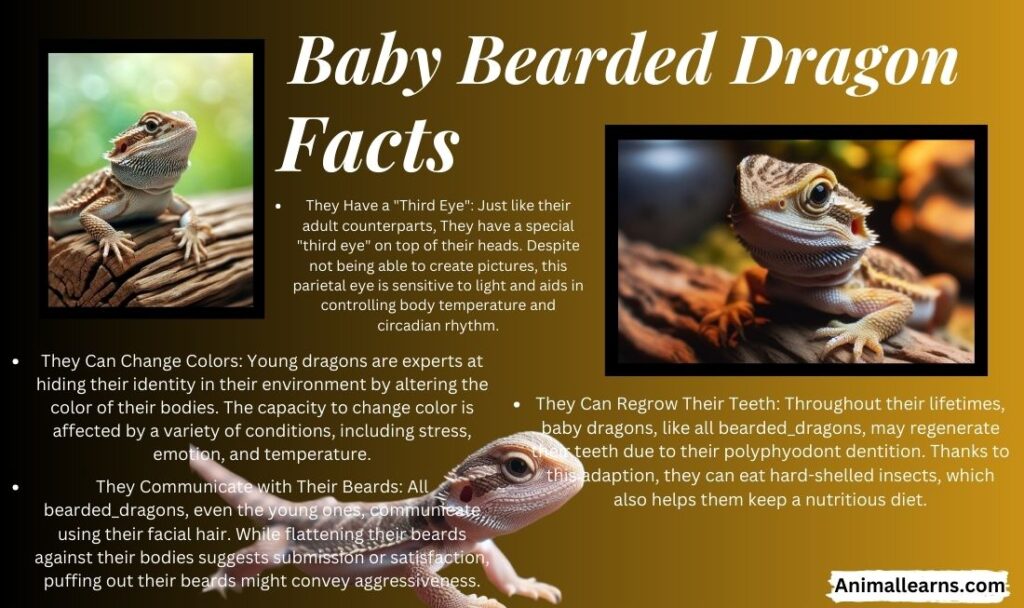
- They Have a “Third Eye”: Just like their adult counterparts, They have a special “third eye” on top of their heads. Despite not being able to create pictures, this parietal eye is sensitive to light and aids in controlling body temperature and circadian rhythm.
- They Can Change Colors: Young dragons are experts at hiding their identity in their environment by altering the color of their bodies. The capacity to change color is affected by a variety of conditions, including stress, emotion, and temperature.
- They Communicate with Their Beards: All bearded_dragons, even the young ones, communicate using their facial hair. While flattening their beards against their bodies suggests submission or satisfaction, puffing out their beards might convey aggressiveness.
- They Can Regrow Their Teeth: Throughout their lifetimes, baby dragons, like all bearded_dragons, may regenerate their teeth due to their polyphyodont dentition. Thanks to this adaption, they can eat hard-shelled insects, which also helps them keep a nutritious diet.
- They Are Social Learners: Research has indicated that young beard dragons can pick up social cues from more experienced adults. Their capacity for social learning aids in their environmental adaptation and the acquisition of vital survival abilities.
Did You Know Baby Bearded Dragons are Called Hatchlings?

A hatchling is a young bearded dragon! One of the nicest reptiles that people keep as pets nowadays is a newborn beard dragon. These microscopic organisms are known as hatchlings because they emerge from eggs!
It may surprise you to learn that there are other creatures on Earth with the same name as infant baby bearded dragons. It’s accurate! They are in the same category as baby geckos, crocodiles, alligators, and turtles!
Incubation Temperature May Impact Hatchlings’ Intelligence
An investigation of the effects of global warming on baby dragons was carried out by a team of academics in the United Kingdom.
They began by putting baby dragon eggs in two different incubators, one of which was warmer than the other, in order to test their experiment. For both, the exact same and strictly regulated room temperature was used.
Following their birth, the hatchlings were subjected to the same procedures, given the same food, and lived in comparable cages. Following their sexual maturation, both groups saw a brief clip of an adult bearded person unlocking a sliding door.
After that, they were each given five minutes to be watched in the enclosure with the sliding door. The experiment’s results showed that bearded dragons who were incubated at lower temperatures were able to open the door faster than their counterparts.
This finding implies that baby dragon babies that are raised in colder climates tend to be more intellectual. Who knew?
Baby Bearded Dragons Really Have a Beard!
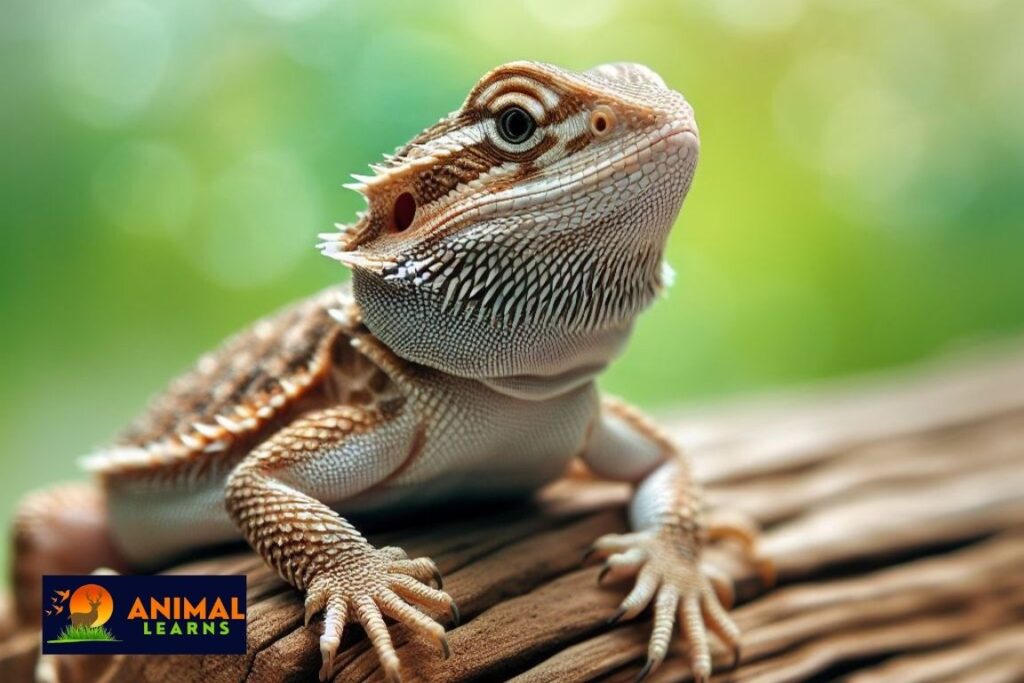
Yes, baby bearded dragons do have a beard, although it is not as fully developed as the beards of adult bearded dragons. There’s a straightforward explanation for the name “bearded dragon” given to these reptiles.
Their skin is rough and bearded on the underside of their chin. The little reptiles can adjust this area of their anatomy, known as the gular pouch, to fend against predators.
You’ll be able to determine whether a baby bearded dragon hatchling is angry. He’ll blow out his gular pouch and open his mouth, which is why. By doing this, the beardie appears more menacing and creates the idea that he is bigger than he actually is.
He could even turn fully black during this defensive mechanism! Because of their distinct personalities, baby bearded dragons make wonderful pets. They are very attractive due to their numerous intriguing personality traits, which go well beyond their beard.
Bearded dragons also don’t copy one another, so you can be sure that each beardie has its own personality.
Hatchlings Can Change Colors!
We understand your thought process: Are young bearded dragons similar to chameleons? Not quite, is the response. Bearded dragons have the ability to alter their body color, albeit it’s not as noticeable as it is in chameleons.
Hatchlings change color to control their body temperature, whereas chameleons change color to hide from predators and attract a partner. For instance, a hatchling’s skin will become lighter if it becomes overheated. By successfully deflecting sunlight, this lets the hatchling chill down.
However, a beardie has to warm up fast if it becomes too chilly. Being cold-blooded reptiles, hatchlings rely on their surroundings to control their body temperature.
This implies that baby bearded dragons can only become heated through exposure to sunshine and outside heat sources. Baby bearded-dragons require humidity, heat lamps, and UV lamps in order to live when maintained as pets.
Their temperature is regulated in part by the heat lamp. By simulating the sun’s rays, the UV lamp promotes healthy bone formation and helps prevent metabolic bone disease.
Feeding
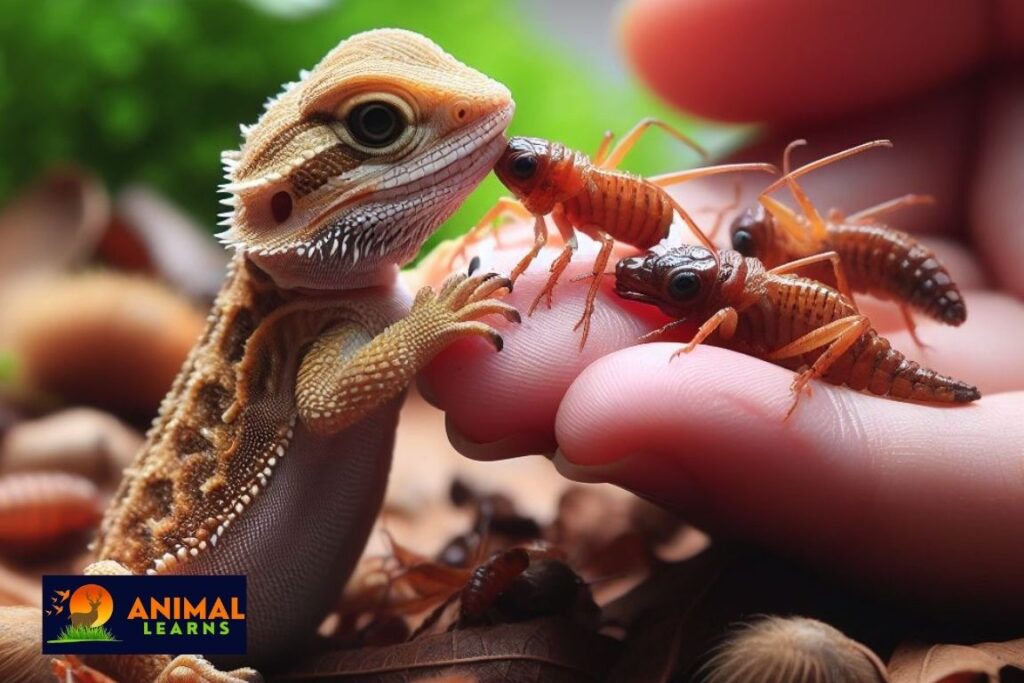
They have special dietary needs to sustain their fast growth and development. This is a thorough advice on providing food for young bearded dragons:
Feeding Pattern
Bearded dragon feeding chart by age
| Age | Feedings per Day | Insects per Feeding |
| 0-2 months | 3 | 10-20 |
| 2-4 months | 3 | 20-30 |
| 4-6 months | 2 | 30-40 |
| 6-12 months | 2 | 40-50 |
Diet
Since their primary food source is insects, they are mostly insectivores. Superworms, mealworms, roaches, and crickets are examples of acceptable insects.
It is important to correctly gut-load these insects, which entails giving them wholesome meals like fruits, vegetables, and commercial gut-loading formulae, to guarantee that the bearded dragon receives the vital nutrients it needs.
You should feed baby bearded dragon two or three times a day, giving them as many insects as they can eat in ten to fifteen minutes. For mature bearded dragons, feeding frequency can be progressively decreased to once a day as they become bigger.
Insect Size
The given insects should be the right size for the baby dragon’s stature. Roaches, mealworms, and crickets shouldn’t be bigger than the baby dragon’s eye socket width. Superworms can be bigger, but because they contain more fat, they should only be served occasionally.
Supplements
Supplements of calcium and vitamin D3 are necessary for the healthy growth and development of baby-bearded dragon bones. For every other feeding, dust the insects with a dosage of calcium powder. Furthermore, provide a weekly vitamin D3 supplement.
Vegetables and Fruits
Although insects are the main food source, young bearded dragons should also have access to a range of chopped fruits and vegetables. Leafy greens like kale, collard greens, and romaine lettuce, as well as fruits like mangoes, apples, and berries, are good choices. The bearded dragon should consume 20–30% of its diet from vegetables and fruits.
Hydration
Young bearded dragons must always have access to clean, fresh water. They should have a little dish of water in their enclosure that is changed every day. Water mist inside the cage can also assist in keeping humidity levels stable and promote drinking.
How Many Dubia Roaches For Baby Bearded Dragon?
Depending on its size and age, you should feed your newborn bearded dragon a certain amount of dubia roaches. Here is a general guideline:
| Age | Number of Dubia Roaches per Feeding |
| 0-2 months | 10-20 |
| 2-4 months | 20-30 |
| 4-6 months | 30-40 |
| 6-12 months | 40-50 |
How Many Mealworms Should I Feed My Baby Bearded Dragon?
Depending on its size and age, your young bearded dragon should be fed a different amount of mealworms. Here is a general guideline:
| Age | Number of Mealworms per Feeding |
| 0-2 months | 10-20 |
| 2-4 months | 20-30 |
| 4-6 months | 30-40 |
| 6-12 months | 40-50 |
Monitoring Growth and Health:
Weigh your infant bearded dragon on a regular basis to track their progress. They should put on weight gradually, and any notable fluctuations in appetite or weight should be reported to a veterinarian.
Recall that a baby dragon’s health and well-being depend on having a healthy diet. You can make sure that your bearded dragon grows up strong and healthy according to these feeding rules.
How Long To Bearded Dragons Live?
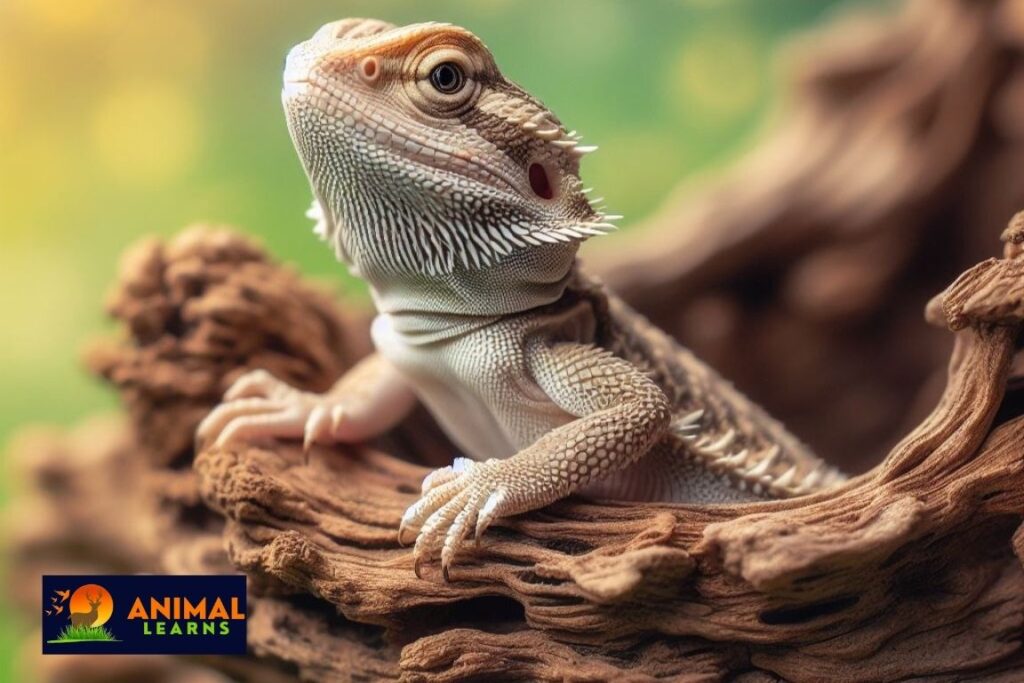
A bearded dragon typically lives between 8 and 15 years. On the other hand, bearded dragon lifespans of up to 18 years have been recorded.
How Big Do Bearded Dragons Get?
Male bearded dragons tend to be bigger than females due to sexual dimorphism. With their tail included, male bearded dragons may reach lengths of 18 to 24 inches and weights of up to 1.5 pounds. Typically, female bearded dragons are smaller, reaching lengths of 16–20 inches and weights of up to 1 pound.
| Gender | Length (inches) | Weight (pounds) |
| Male | 18-24 | 0.5-1.5 |
| Female | 16-20 | 0.5-1 |
Terrarium Size For A Baby Bearded Dragon:

Prominent authorities on contemporary bearded dragon rearing advise containing bearded dragons in enclosures no less than 120 gallons (48 L x 24 W x 24 H), ideally bigger.
For ease of access, the enclosure should include a front aperture and good ventilation. A mesh top would be preferable over a solid one. Naturally, larger is always preferable!
Are Bearded Dragons Good Pets
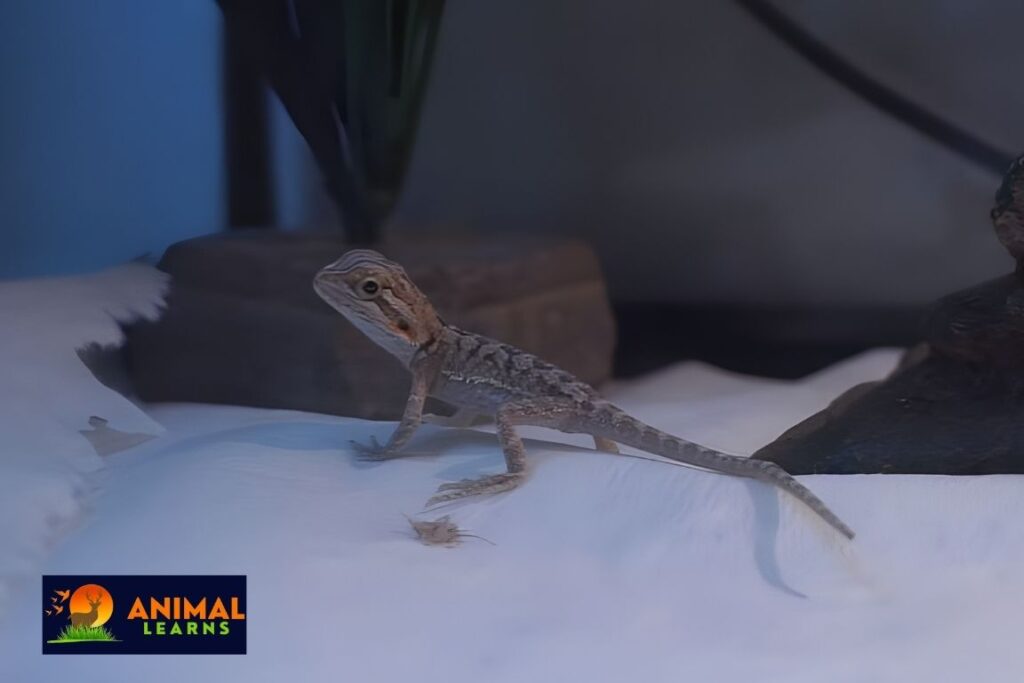
Yes, anyone searching for a low-maintenance reptile for a pet might choose bearded dragons. They may be fairly docile and sociable, and they are reasonably easy to care for. Additionally, bearded dragons don’t need a large amount of area because they are little animals.
The following are some explanations for why bearded dragons may make wonderful pets:
- Taking care of them is not too difficult. Bearded dragons don’t need a lot of extra attention. They require a warm cage with a place to bask in addition to a diet consisting primarily of vegetables and insects.
- They are submissive and amiable. In general, bearded dragons are calm, amiable reptiles. They are manageable and frequently take pleasure in spending time with their owners.
- They are not very big. Reptiles with beards are comparatively tiny. They usually reach a length of 18 to 24 inches, including the tail.
- They don’t say much. Reptiles with beards tend to be quieter. They are an excellent option for those who live in flats or other tiny areas because they don’t produce a lot of noise.
Baby Bearded Dragon’s price
A young bearded dragon’s cost could change based on the breeder, the area, and the morph. However, the price range for a newborn bearded dragon is anticipated to be between $40 and $100.
Here is a general breakdown of the price of these dragons:
- Albino: $50-$100
- Normal: $40-$60
- Hypo: $60-$80
- Tangerine: $70-$100
- Breeders Choice: $90-$150
The price of a baby bearded can also be affected by its gender. Males are typically more expensive than females.
How Long Can A Bearded Dragon Go Without Eating
Reptiles have a strong constitution, and bearded dragons can go for lengthy periods without nourishment. But feeding them a consistent, wholesome diet is the greatest way to preserve their general health and well-being.
The average amount of time that bearded dragons may go without food is broken down as follows:
- Baby bearded dragon (0-2 months old): 1-2 days
- Young bearded dragons (2-4 months old): 2-3 days
- Adult bearded dragons (4+ months old): 3-4 weeks
Conclusion
Hatchlings, another name for a baby bearded dragon, is a delicate animal that needs extra care and attention to survive. Since they are insectivores, they require 2-3 meals every day. Give them a warm, damp space to occupy. They can develop into adult pets who are happy and healthy with the right care.
FAQs (Frequently Asked Questions)
What do baby bearded dragons eat?
They are insectivores, primarily consuming crickets, mealworms, roaches, and superworms. Ensure the insects are properly gut-loaded for essential nutrients.
Where do baby bearded dragons live?
Warm, humid temperatures are what bearded dragons enjoy. Savannas, scrublands, deserts, and subtropical woods are among their habitats. Because they are somewhat arboreal, they enjoy spending time in low-lying trees and plants.
How often should I feed my baby bearded dragon?
Feed baby bearded dragons 2-3 times a day, offering as many insects as they can consume in 10-15 minutes. Adjust feeding frequency as they mature, reducing it to once a day for adults.
Q: What temperature should the enclosure be for baby bearded dragons?
A: Maintain temperatures between 95-105 degrees Fahrenheit during the day and around 75 degrees Fahrenheit at night. Humidity levels should be kept between 30-40%.
What are the signs of a healthy baby bearded dragon?
A young bearded dragon in excellent health will be energetic, and aware, have bright, clear eyes, and have a voracious appetite. They should also have firm, smooth skin and show no symptoms of disease, such as diarrhea, weight loss, or lethargic behavior.


